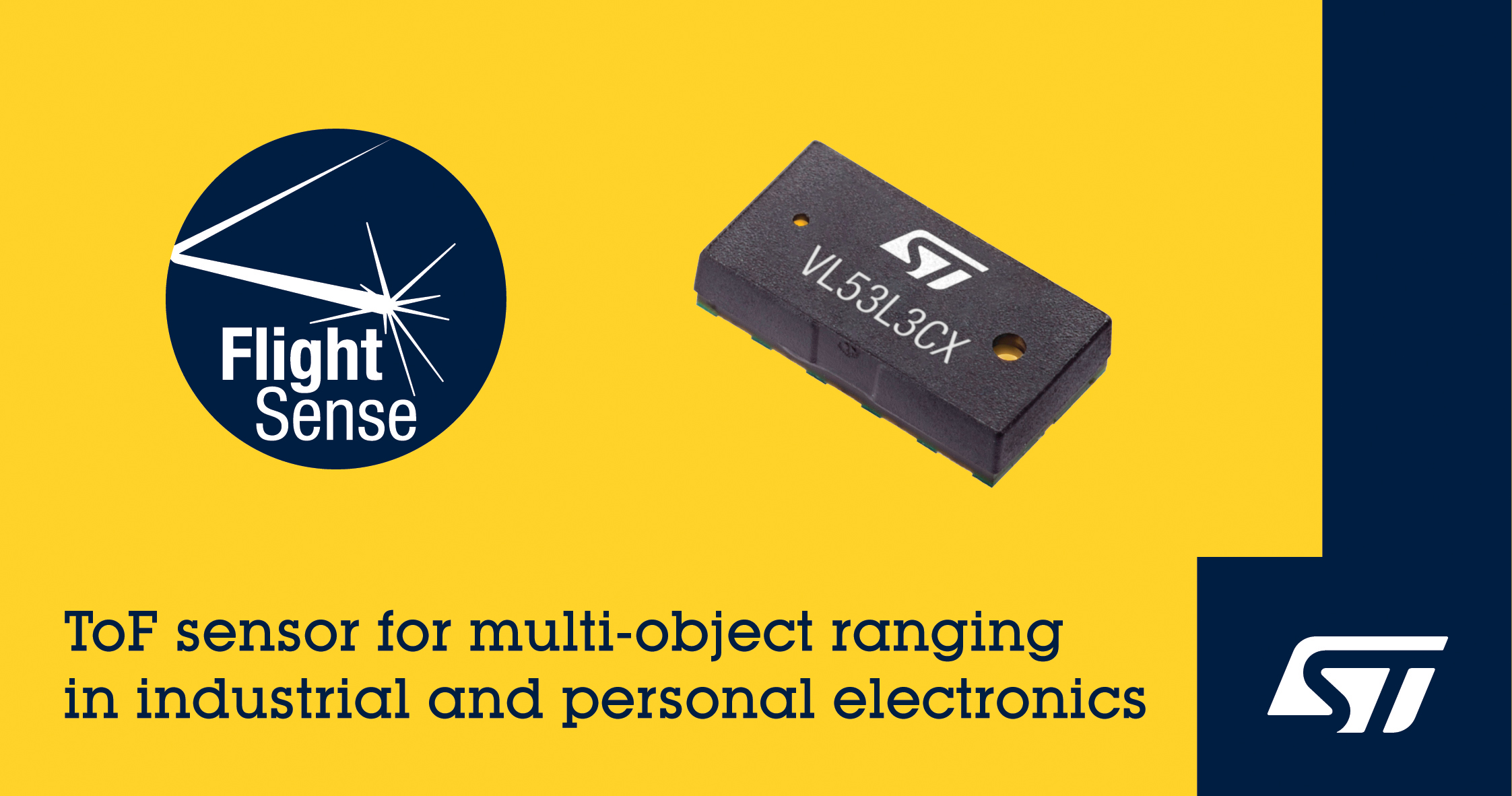STMicroelectronics announced the extension of its FlightSense ToF ranging sensors by introducing the VL53L3CX which allow measuring distances to multiple objects and increasing accuracy. Meanwhile, the company also introduced a reference design suited for monitoring social distancing and assuring remote operation to protect human health in all environments in response to global or local pandemic conditions.
The ToF sensor VL53L3CX measures object ranges from 2.5 cm to 3 m, allowing designers to introduce features like occupancy detectors or reporting the exact distances to multiple targets within the sensor’s field-of-view.

(Image: ST)
ST said that its patented technology increases cover-glass crosstalk immunity and allows real-time smudge compensation preventing external contamination from adversely affecting the ranging accuracy of, for example, vacuum cleaners or equipment that may be used in a dusty industrial environment. Ranging under ambient lighting is also improved.
Short-distance measurement accuracy is also enhanced for wall tracking, faster cliff detection, and obstacle avoidance, supporting equipment such as service robots and vacuum cleaners.
On the other hand, ST offers its reference design which leverage Bluetooth technology and ST’s BlueNRG-2 System-on-Chip with tunable RF output power. The BlueNRG-Tile reference design measures the signal strength of nearby Bluetooth non-connecting beacons and, in real-time, calculates proximity to these sources. The circuit can be provisioned and then operate, issuing warnings when another beacon intrudes on an adjustable perimeter or when tampered with – even when not connected to a smartphone or 5G network.
To assure power economy and extend battery lifetime, the ultra-low power components are further enhanced with a MEMS (Micro-Electro-Mechanical Systems) accelerometer that power cycles the unit when it isn’t moving. Optionally, internal or external memory could provide long-term storage of nearby beacons, allowing contact tracing.
Several members of the ST Partner Program have evaluated and adopted the reference design as a foundation for location-monitoring and contact-tracing platforms.












